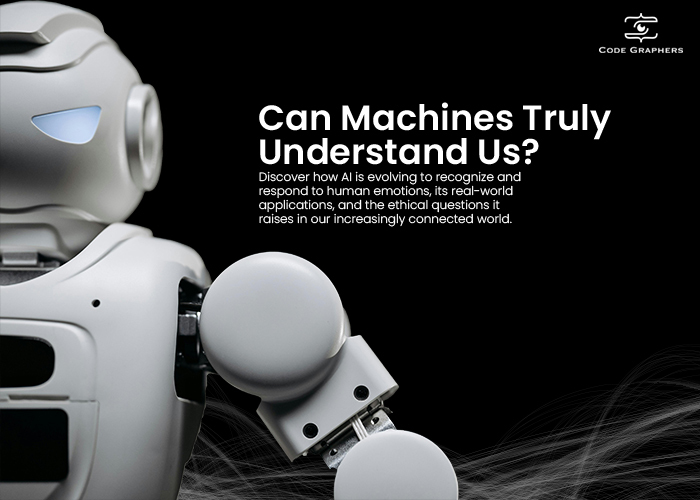AI and Emotional Intelligence: Can Machines Truly Understand Us?

In the evolving landscape of artificial intelligence (AI), one question continues to spark curiosity and debate: Can machines ever truly understand human emotions? Emotional Intelligence (EI), once considered a distinctly human trait, is now intersecting with the capabilities of AI in ways that were unimaginable just a decade ago.
This blog explores how AI is engaging with emotional intelligence, the possibilities it opens up, and the ethical considerations that come along with it.
What Is Emotional Intelligence?
Emotional Intelligence refers to the ability to recognize, understand, manage, and influence emotions—both one’s own and others’. It plays a vital role in how we communicate, build relationships, and make decisions.
In humans, EI involves empathy, self-awareness, and social skills. Translating these into machine behavior is complex, but not impossible.
How AI Is Learning to “Feel”
AI doesn’t feel emotions in the way humans do, but it can recognize and respond to them. With advancements in natural language processing (NLP), computer vision, and sentiment analysis, AI systems are being trained to interpret facial expressions, vocal tones, and written cues to determine emotional states.
Here are a few ways AI is developing emotional intelligence:
- Chatbots with Empathy: Modern customer service bots can detect frustration or satisfaction in user input and adapt their responses accordingly.
- Healthcare Applications: AI is being used to identify early signs of mental health issues through speech and writing patterns.
- Human Resource Tools: AI-driven tools are analyzing interviewee emotions during video calls, offering insights into engagement and honesty.
Why Emotional AI Matters
The integration of EI into AI has significant implications across industries:
- Customer Experience: Emotionally aware AI can create personalized and meaningful interactions, increasing customer satisfaction and loyalty.
- Education: AI tutors that respond empathetically can better support students, especially in remote learning environments.
- Healthcare: Emotional AI can help doctors understand patient emotions better, improving diagnosis and care.
The Ethical Dilemma
As promising as emotional AI sounds, it raises critical ethical questions:
- Privacy Concerns: Analyzing emotions requires access to sensitive personal data. Who controls that data, and how is it used?
- Bias and Accuracy: Emotional expressions vary across cultures, genders, and individuals. Misinterpreting these can lead to biased or harmful outcomes.
- Emotional Manipulation: Could emotionally intelligent AI be used to exploit vulnerabilities for marketing or political gain?
These challenges highlight the need for strong ethical frameworks, transparency, and human oversight in the development of emotional AI.
Looking Ahead
The journey to creating emotionally intelligent machines is still in its early stages, but it’s clear that AI is moving beyond pure logic and into the realm of human nuance. While AI may never feel emotions like we do, its ability to understand and respond to them is rapidly improving.
As we move forward, the key lies in balancing innovation with responsibility—ensuring that emotional AI enhances human connection rather than replaces it.
Conclusion
AI and Emotional Intelligence are no longer opposing concepts. Together, they represent a powerful shift toward more intuitive, responsive, and human-centered technology. As with any transformative tool, the question isn’t just what AI can do, but how we choose to use it.
